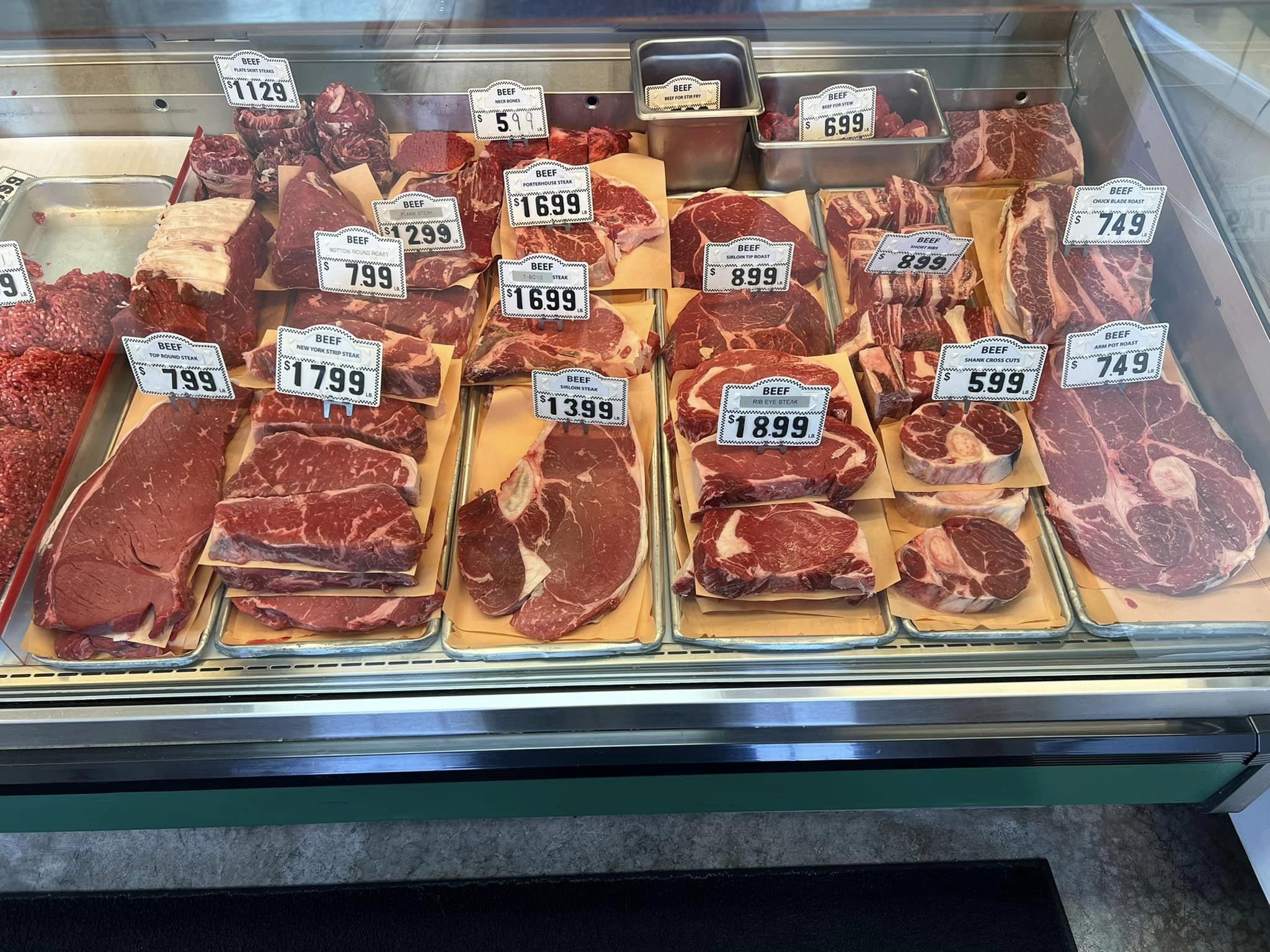Discover the Neighborhood Taste at Bagley Farms Meat Market Edwardsville IL: Fresh and Delicious
Discover the Neighborhood Taste at Bagley Farms Meat Market Edwardsville IL: Fresh and Delicious
Blog Article
Reveal the Art of the Butcher's Cut in a Modern Meat Market
In the ever-evolving landscape of modern-day meat markets, the butcher's cut has transcended its traditional origins, merging old-time craftsmanship with modern methods. What absolutely sets the modern butcher apart is their capability to forge a deeper link between consumers and the origins of their meat.
Development of Butchery Methods
The development of butchery strategies shows a rich tapestry of technology and adaptation driven by innovations in innovation, changes in consumer demand, and a much deeper understanding of meat scientific research. Historically, butchery was a craft gave with generations, with methods refined over centuries to optimize yield and flavor. Nonetheless, the industrial transformation introduced mechanization, transforming typical practices and allowing large processing.
The mid-20th century saw butchery techniques additionally improved by clinical insights into muscle mass biology and meat aging, boosting both inflammation and preference. Developments like vacuum product packaging and refrigeration expanded item shelf-life, permitting butchers to diversify offerings and improve high quality control. This duration likewise noted the surge of customized tools, such as band saws and meat slicers, which increased precision and efficiency in meat processing.

The 21st century has introduced digital technology into the butchery world. Digital systems currently help in tracking animal provenance and optimizing cuts to meet specific consumer choices. In addition, a renewal in artisanal butchery has actually emerged, blending typical abilities with modern-day understanding to accommodate consumers looking for moral and sustainable meat options. This evolution emphasizes a vibrant interplay between practice and advancement, meeting contemporary needs while protecting the craft's heritage.
Recognizing Meat Cuts
Comprehending the intricacies of meat cuts is vital for both butchers and customers seeking high quality and worth. For butchers, precise cuts show ability and respect for the craft, guaranteeing minimal waste and ideal yield.

Recognizing muscular tissue structure is important; muscles used extra often by the animal often tend to be harder and are best fit for slow food preparation techniques, while less-used muscles, like those located in the loin, are much more tender and perfect for barbecuing or roasting. Familiarity with these differences equips customers to make educated choices, improving their culinary undertakings.
Selecting Top Quality Meat
Selecting the right meat includes more than simply picking an aesthetically appealing item from the display. bagley farms meat market edwardsville il. The art of choosing quality meat needs a critical eye and understanding of specific qualities that signify quality and excellence. Pay attention to the color; beef needs to have an intense, cherry-red shade, while lamb needs to exhibit a soft pink tone, and pork a pale pink. This shows the meat is fresh and hasn't been exposed to oxygen for as well lengthy.
Secondly, think about the marbling, which describes the white streaks of fat within the muscle. Proper marbling is an essential sign of inflammation and taste, as it thaws throughout food preparation, boosting the meat's juiciness. Remember, higher marbling frequently associates with superior high quality cuts, such as USDA Prime.
Appearance is an additional critical factor; meat ought to feel firm to the touch, not slimy or excessively soft. Furthermore, bear in mind the scent. Fresh meat ought to have a clean, neutral odor, cost-free from any kind of sour or repulsive smells.
Coupling Cuts With Food Preparation Approaches

Alternatively, tougher cuts like brisket and chuck roast are rich in collagen, which breaks down right into gelatin when cooked slowly. These cuts are ideal for braising or sluggish roasting, permitting the meat to tenderize gradually and create deep, complex flavors. Cuts such as brief ribs and pork shoulder make out well with slow-cooking approaches, where extended cooking times transform their durable appearances into succulent meals.
Lamb shanks and oxtail, which call for long term food preparation to soften, are perfect candidates for stewing or slow simmering. These approaches coax out rich, hearty flavors while maintaining wetness. By recognizing the unique qualities of each cut, cooks and home cooks alike can boost their culinary creations, making sure each dish is both pleasing and remarkable.
The Butcher's Role Today
Browsing the evolving landscape of the contemporary meat market, the butcher's role today extends past simple preparation of cuts. Contemporary butchers are cooking artisans, instructors, and supporters for sustainable techniques. They bridge the void between the farm and the fork by making certain honest sourcing, understanding pet husbandry, and prioritizing openness in the supply chain. This change reflects the expanding consumer need for quality over amount, where provenance and animal well-being are paramount.
In addition to crafting exact cuts, butchers now engage straight with customers, using cooking advice and tailoring options to suit private demands and preferences. Their expertise in meat aging, marbling, and flavor accounts empowers consumers to make educated choices, enhancing their culinary experiences. This tailored service exemplifies the butcher's progressing duty as a trusted advisor in the kitchen area.
In addition, butchers are try here critical in lessening waste, making use of whole animals to produce diverse items such as sausages and supplies. This comprehensive method not just values the pet but also lines up with contemporary sustainability objectives. By doing this, the modern-day butcher embodies both tradition and development, adapting to an ever-changing market while protecting the creativity and honesty of their craft.
Verdict
The modern butcher's craft delicately weaves traditional techniques with modern developments, highlighting sustainable methods and honest sourcing. Mastery in comprehending diverse meat cuts and quality indicators empowers butchers to provide informed recommendations, aligning specific cuts with optimal cooking methods. This knowledge not only elevates cooking experiences yet additionally reinforces the link between consumers and the origins of their food. By Learn More recognizing historic methods while accepting contemporary demands, the butcher's duty stays crucial in today's advanced meat market (bagley farms meat market edwardsville il).
Report this page